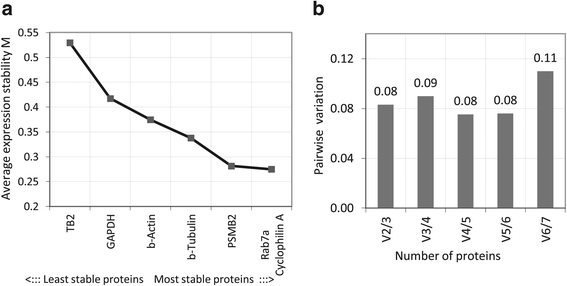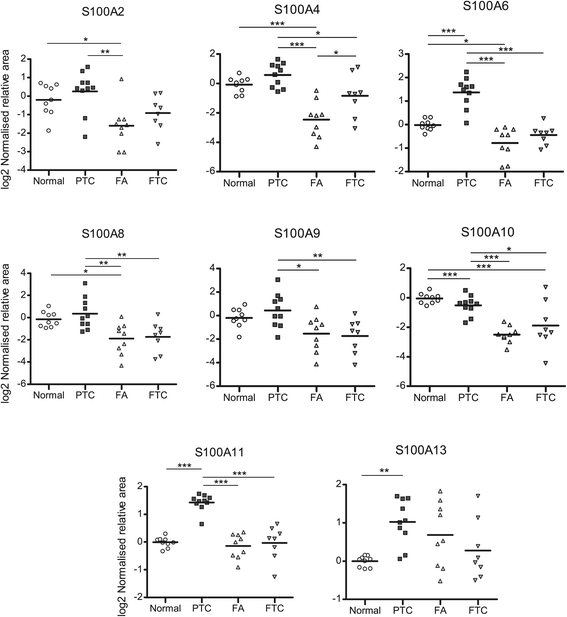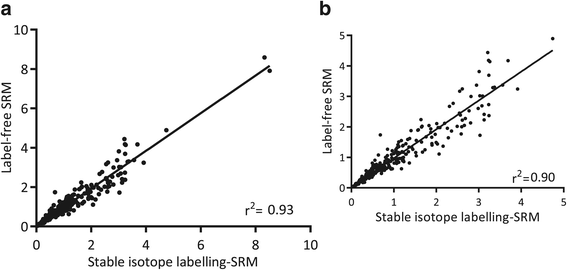A multiplexed, targeted mass spectrometry assay of the S100 protein family uncovers the isoform-specific expression in thyroid tumours
- PMID: 25880590
- PMCID: PMC4391164
- DOI: 10.1186/s12885-015-1217-x
A multiplexed, targeted mass spectrometry assay of the S100 protein family uncovers the isoform-specific expression in thyroid tumours
Abstract
Background: Mounting evidence demonstrates a causal role for S100 proteins in tumourigenesis and several S100 isoforms have shown utility as biomarkers of several types of cancer. The S100 family is comprised of 21 small isoforms, many of them implicated in important cellular functions such as proliferation, motility and survival. Furthermore, in vivo experiments have proven the role of S100 proteins in tumour growth and disease progression, while other studies have shown their prognostic value and involvement in resistance to chemotherapy drugs. Taken together, all these aspects highlight S100 proteins as potential therapeutic targets and as a promising panel of cancer biomarkers. In this work, we have developed a mass spectrometry (MS)-based method for the multiplexed and specific analysis of the entire S100 protein family in tumour tissues and have applied it to investigate the expression of S100 isoforms in the context of thyroid cancer, the main endocrine malignancy.
Methods: Selected Reaction Monitoring (SRM)-MS and stable isotope labelling/label-free analysis were employed to investigate the expression of the 21 S100 protein isoforms in thyroid tissue samples. Specimens included 9 normal thyroid tissues and 27 tumour tissues consisting of 9 follicular adenomas (FA), 8 follicular carcinomas (FTC) and 10 papillary carcinomas (PTC).
Results: The multiplexed and targeted mass spectrometry method led to the detection of eleven S100 protein isoforms across all tissues. Label- and label-free analyses showed the same significant differences and results were confirmed by western blot. S100A6, S100A11 and its putative interaction partner annexin A1 showed the highest overexpression in PTC compared to normal thyroid. S100A13 was also elevated in PTC. Reduced S100A4 expression was observed in FA compared to all other tissues. FA and FTC showed reduction of S100A10 and annexin A2 expression.
Conclusions: Targeted mass spectrometry allows the multiplexed and specific analysis of S100 protein isoforms in tumour tissue specimens. It revealed S100A13 as a novel candidate PTC biomarker. Results show that S100A6, S100A11 and Annexin A1 could help discriminate follicular and papillary tumours. The diagnostic and functional significance of S100A4 and S100A10 reduction in follicular tumours requires further investigation.
Figures





References
Publication types
MeSH terms
Substances
Associated data
- Actions
- Actions
- Actions
- Actions
LinkOut - more resources
Full Text Sources
Other Literature Sources
Medical
Research Materials
Miscellaneous

